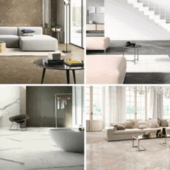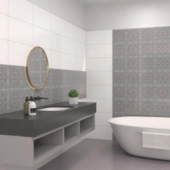When it comes to home renovation, choosing the right flooring is a significant decision. Flooring defines the aesthetic, comfort, and longevity of your space. Wooden Flooring vs Wooden Tiles is one of the most debated topics among homeowners and interior designers alike. Both options offer unique benefits, but they also differ in key aspects. Understanding these differences will help you make an informed decision about which material to choose for your home. Let’s dive into the difference between Wooden Flooring vs Wooden Tiles and find out which option suits your needs better.
What Is Wooden Flooring?
Wooden flooring refers to planks made from real wood, usually oak, walnut, or maple. These floors are either solid or engineered. Solid wooden floors are made from a single piece of wood, whereas engineered wooden floors consist of multiple layers of wood glued together. This type of flooring offers a natural, warm, and rich look that elevates any room.
Pros of Wooden Flooring
– Durability: Real wood flooring is known for its long-lasting quality, often lasting for decades with proper maintenance.
– Natural Aesthetic: Wooden floors bring a natural warmth and elegance to any room, making them highly desirable for living rooms and bedrooms.
– Refinishing Option: You can sand and refinish wooden floors to restore their original appearance, making them look new again after years of wear.
Cons of Wooden Flooring
– Cost: Wooden flooring tends to be more expensive than other options, both in terms of material and installation.
– Moisture Sensitivity: Wood can warp and swell in high-humidity environments, making it less suitable for bathrooms or basements.
– Maintenance: Wooden floors need regular maintenance, including cleaning, polishing, and occasional refinishing, to keep them looking their best.
What Are Wooden Tiles?
Wooden tiles, also known as wood-look tiles, are ceramic or porcelain tiles designed to mimic the appearance of real wood. They offer the aesthetic appeal of wood but are much more versatile in terms of where they can be used. These tiles are becoming increasingly popular in modern home designs due to their durability and ease of maintenance.
Pros of Wooden Tiles
– Water Resistance: Unlike real wood, wooden tiles are highly resistant to moisture, making them suitable for bathrooms, kitchens, and even outdoor areas.
– Low Maintenance: Wooden tiles are easy to clean and require minimal maintenance. A simple sweep and mop will keep them looking pristine.
– Affordable: Wooden tiles are often more affordable than real wood flooring, especially when considering long-term maintenance costs.
– Durability: Wooden tiles are extremely durable and resistant to scratches, dents, and general wear and tear. They can last for decades without showing significant signs of aging.
Cons of Wooden Tiles
– Cold Surface: Unlike real wood, tiles tend to be cold underfoot, especially in the winter months, which can make them less comfortable in areas like living rooms or bedrooms.
– Harder Feel: Wooden tiles don’t offer the same warmth and softness as real wood. Walking on tiles for long periods may not be as comfortable.
– Limited Refinishing: Once damaged, wooden tiles can’t be refinished like wooden floors; they would need to be replaced.
Wooden Flooring vs Wooden Tiles: Key Differences
- Material Composition: Wooden flooring is made from real wood, while wooden tiles are made from ceramic or porcelain materials that imitate the look of wood.
- Durability: While both options are durable, wooden tiles are more resistant to water and scratches, making them a better choice for high-traffic areas and places with moisture.
- Cost: Wooden flooring tends to be more expensive, not only in terms of upfront costs but also regarding installation and long-term maintenance. Wooden tiles, on the other hand, offer a more budget-friendly solution without sacrificing aesthetic appeal.
- Aesthetic Appeal: Wooden flooring has a more natural and authentic appearance, which appeals to those who want the real look and feel of wood. Wooden tiles, however, come in various designs and colors, offering more versatility in terms of matching different décor styles.
- Comfort: Wooden flooring provides a warmer and softer surface to walk on, making it more comfortable for living spaces. Wooden tiles, being ceramic, are cooler and harder underfoot, which might be a disadvantage in colder climates.
Wooden Flooring vs Wooden Tiles: Which Is Better?
Choosing between Wooden Flooring vs Wooden Tiles depends on your lifestyle, budget, and the specific needs of your home. Here are a few considerations:
– If you’re looking for a luxurious and authentic feel, with the option to refinish over time, then wooden flooring is the way to go.
– If you prefer something more cost-effective, low-maintenance, and moisture-resistant, then wooden tiles are an excellent option, especially for areas like kitchens and bathrooms.
Maintenance and Longevity
– Wooden Flooring: Requires more maintenance, including periodic refinishing, especially in high-traffic areas. However, well-maintained wooden floors can last for decades, sometimes even over 50 years.
– Wooden Tiles: Are highly durable and require minimal upkeep. Simple cleaning methods will keep the tiles looking new for years. Since they are resistant to water and stains, they can last as long as 20 to 30 years with little to no visible wear.
Cost Comparison: Wooden Flooring vs Wooden Tiles
When considering wooden flooring vs wooden tiles, cost is a major factor for most homeowners. Here’s how they compare:
– Wooden Flooring: On average, real wood flooring can cost anywhere from $8 to $15 per square foot, depending on the type of wood. Installation can add an additional $3 to $5 per square foot.
– Wooden Tiles: Generally, wooden tiles cost between $4 to $8 per square foot, and installation costs are similar, typically around $4 to $7 per square foot.
Environmental Impact
– Wooden Flooring: Using real wood can contribute to deforestation if not sourced responsibly. However, many manufacturers now use sustainable practices, making wood flooring a more eco-friendly choice.
– Wooden Tiles: Made from natural materials like clay and sand, wooden tiles have a smaller environmental footprint, but they still require significant energy during production. However, many companies are moving towards more sustainable production methods.
Final Verdict
So, which is better: Wooden Flooring vs Wooden Tiles? The answer depends on your preferences, budget, and the room where the flooring will be installed. For a classic, timeless look and long-term investment, wooden flooring may be the best choice. However, if you need a cost-effective, durable, and moisture-resistant option, wooden tiles might be the better fit.
Conclusion
Both wooden flooring vs wooden tiles have their advantages and disadvantages. Ultimately, the best option depends on your specific needs, budget, and the areas in which you plan to install them. Whether you’re drawn to the authenticity of real wood or the practicality of wooden tiles, each option can significantly enhance the aesthetic of your home.
For expert advice, quality materials, and professional installation services, visit Chandan Marbles located on Nagar Rd, opposite Forest Park near Yadav Petrol Pump in TulajaBhawani Nagar, Lohegaon, Pune. Feel free to call us at +91 8888843560 or visit our website at www.chandanmarbles.com






